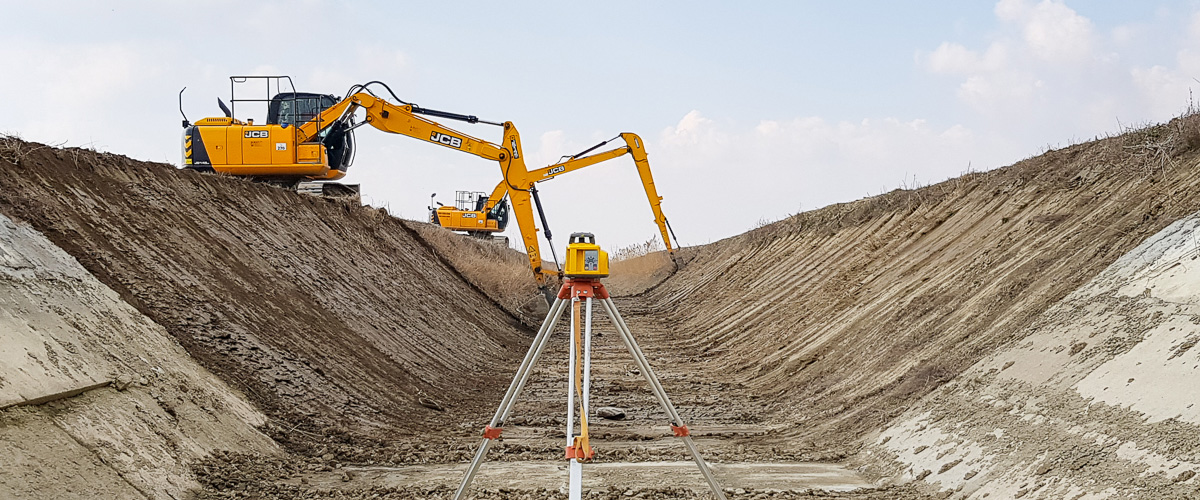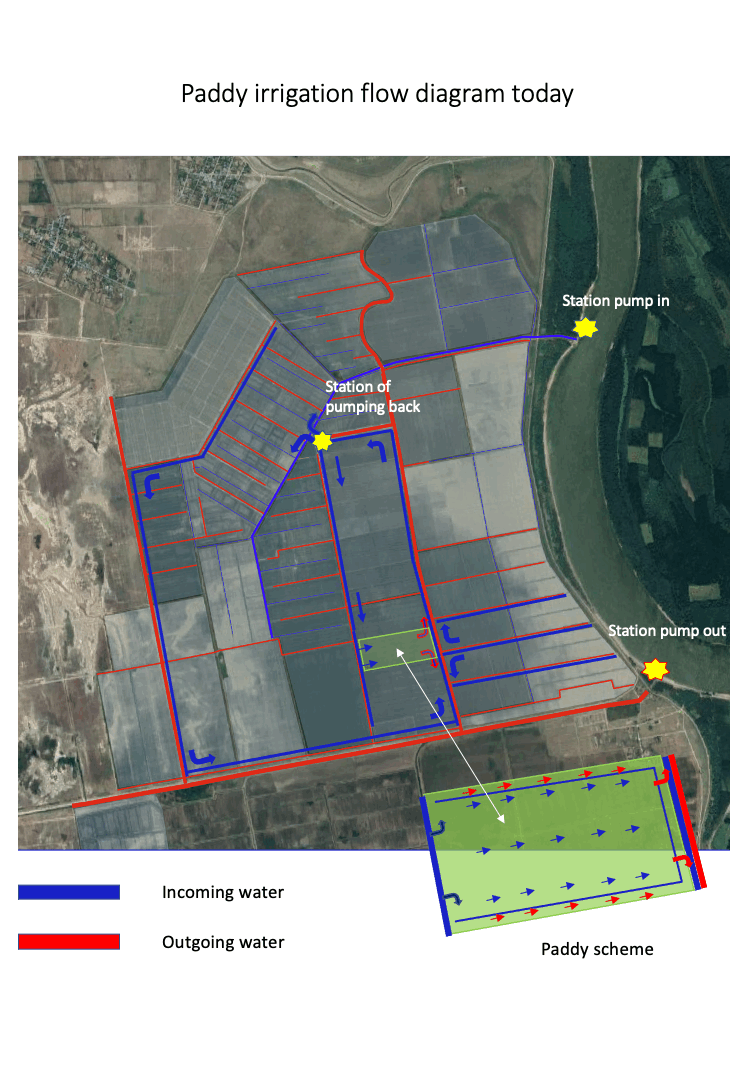How is rice cultivated?
Rice is born and grows in lands of water, in those well-delimited bodies of water that make up canals and paddies.
The preparation of the soil before sowing is very important and is carried out immediately after the previous autumn harvest, or immediately before the spring sowing. The land used for cultivation is always perfectly levelled and divided into smaller basins, called paddies, by small earthen embankments. The basins are filled with water before or after the sowing, depending on the technique used. Thanks to modern laser instruments, today it is possible to level the ground with high precision in order to only use the amount of water that is strictly necessary. This allows for important reductions in water use and a greater control of weeds.
Sowing is carried out mechanically.
The two principal cultivation techniques differ on the basis of the moment in which the field is flooded.
In the more traditional technique, the field is flooded before the sowing, whereas in the more modern technique the rice seeds are spread on a dry ground that is only flooded after the plants have germinated. The more recent technique has been developed to reduce the use of water, but recent research has shown contrasting results. In fact, the use of greater quantities of water might be an advantage, so long as the rice field is inserted in a larger agro-ecosystem, rather than being seen as an isolated, closed system.


The older technique of direct wet seeding foresees a dry phase: a few days after sowing, water is drained from the paddies to allow for the rice seedling to take root firmly. The field is then flooded again.
However, this water does not have to be wasted: the water drained from the paddies can be recycled to irrigate other rice paddies and other crops.
Furthermore, all the water fed into the fields at the beginning of the crop season recharges the groundwater reserves, storing water for the summer period, when shortages may occur.
This technique, known as “flow-through” (or permanent submersion), is the conventional irrigation system. Water is supplied and regulated through a series of sluice gates from the highest to the lowest basin. During the rice-growing period, water is usually kept at a depth of 4-8 cm and drained 2 or 3 times during the season to improve crop rooting, reduce algal growth and allow herbicide application.
Fertilisation restores the most important plant nutrients that are removed with crop harvests, and maintains soil fertility.
Why water?
Rice has the competitive advantage of being a semi-aquatic (water-loving) plant, unlike most weeds that infest its fields. This substantial difference allows the rice grower to manage weeds, at least in part, by managing water in the field, thus eliminating those weeds that would otherwise reduce the harvest.
The second competitive advantage of rice is the reason for which fields are kept flooded.
The term “thermal inertia” defines the capacity of a system to retain and gradually release “stored” heat.
Especially in certain phases of the life cycle of rice, its potential yield can be negatively impacted by low temperatures. The water that submerges the fields maintains a constant microclimate thanks to its thermal inertia. Therefore, even if there is strong diurnal temperature variation, the plant will be able to express all of its productive potential.


Rice fields use large amounts of water
If we do not take context into account, and we consider only the volume of water that is fed into a rice paddy, this statement is certainly true.
However, what differentiates rice farming from other crops, and one rice farmer from another, is the way in which water is managed: water enters the field, a small part filters into the water table while most of it remains locked in the soil of the field. Some of the water flux from the field will flow into the next field, and the cycle will continue. If wisely managed, it is possible to only use the amount of water that is really necessary, without waste, and excess water can be reused to irrigate other crops and as a “reservoir” for groundwater.
In fact, rice fields are an important and extensive water reservoir: large quantities of water are stored in the paddies and in underlying aquifers. This extension is both temporal and spatial: rice recharges groundwater reserves in a moment in which water is not necessary for other crops, and this water is thus subsequently made available to other crops for a long time.
For an in-depth look into this topic, we recommend the following text:
Ferrero A, Vidotto F., (2006), Agro-economical traits of rice cultivation in Europe and India. Edizioni Mercurio S.r.l, Vercelli.
The Km 230:
An example of our commitment to the rational use of water resources is the recirculation system for irrigation water that we have adopted in two sectors of our farm in Romania.


The image shows the Km230 sector as an example. Before our interventions, water was pumped from the Danube into the sector’s main intake channel. From here, the water was conveyed through various branches (blue channels) to each field. The excess water and the water resulting from field drainage were then collected by drainage channels (red) and conveyed to the pumping station (out) to be pumped back into the Danube. In essence, it was a very inefficient system. Through major earthworks and the restoration of old channels, the construction of new channels and of a pumping station, we succeeded in creating a virtuous system whereby excess water and water drained from the paddies is blocked south of the sector (point A); from here it is conveyed to a large new storage channel and is then pumped back into the system for reuse.
